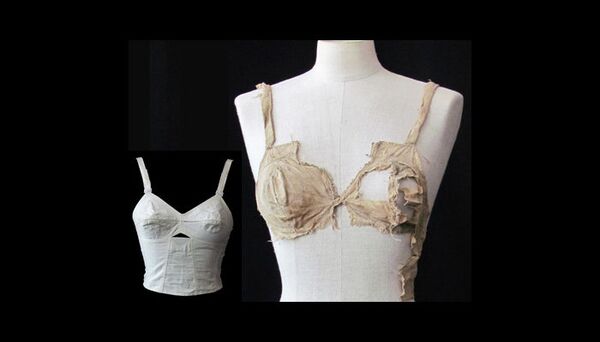Four linen bras that were found in an Austrian castle date back to the 15th century, meaning that the undergarment appeared 500 years earlier than previously thought, the University of Innsbruck said on its website on Thursday.
The discovery was made during renovation works at the Lengberg Castle in East Tyrol, Austria, in 2008, although it did not make the news until it was confirmed that the bras are some 600 years old.
The bras were found in a vault filled with waste, containing some 2,700 textile and leather fragments mixed with twigs and straw.
Four linen textiles resemble modern bras. The criterion for this classification is the presence of distinct cut cups.
“Two more fragmented specimens appear to be a combination of a bra and a short shirt,” said Beatrix Nutz, the archaeologist who made the discovery.
“The third ‘bra’ looks a lot more like modern bras with two broad shoulder straps and a possible back strap, not preserved but indicated by partially torn edges of the cups onto which it was attached,” she went on.
The fourth undergarment can be described as a longline bra and most resembles modern undergarments.
Brassieres were commonly thought to have appeared about 100 years ago, and until now nothing indicated that bras with clearly visible cups existed before the 19th century. Certain medieval written sources sometimes mention “bags for the breasts” or “shirts with bags.” Written records also indicate that medieval women used “breast-bands” to bind down oversized breasts.
Among those credited with inventing the bra are French corset-maker Herminie Cadolle, who patented it in France in 1889, and Mary Phelps Jacob, who obtained the U.S. patent in 1914.


